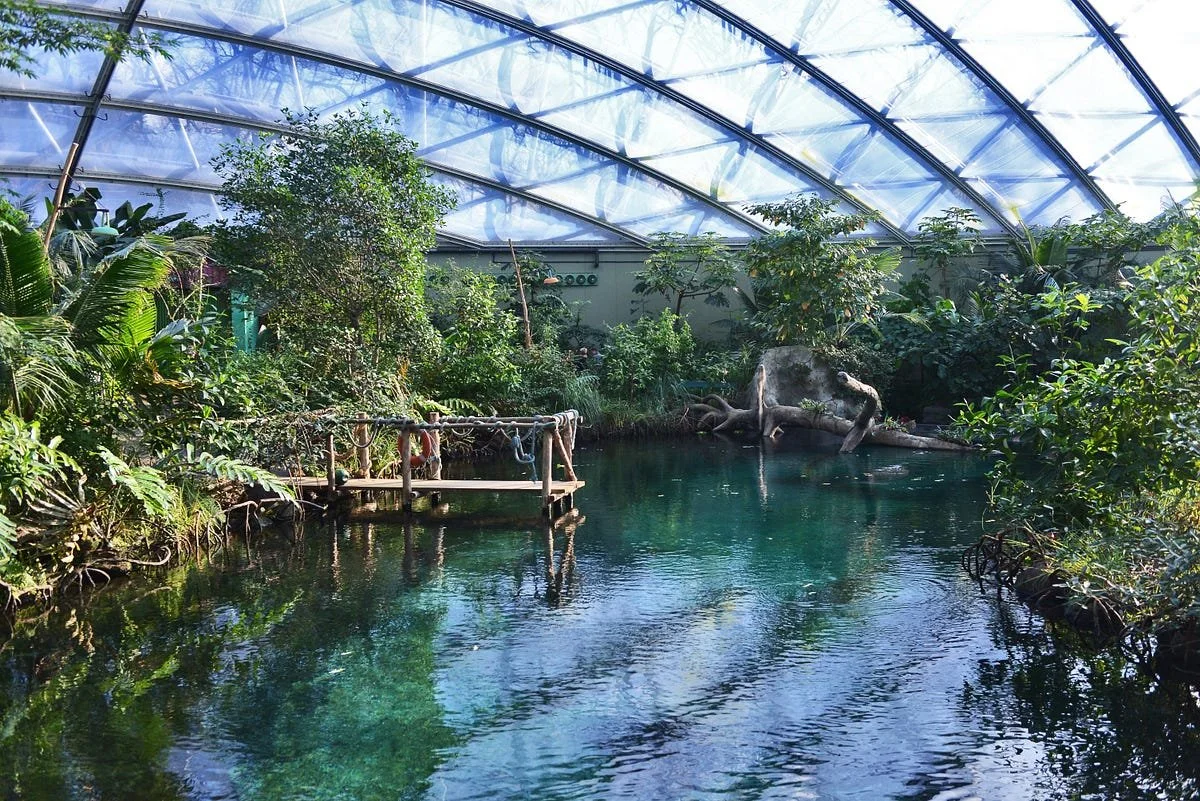What’s the story of the biggest indoor mangrove forest?
The "Mangrove" project was constructed between 2016 and 2017 by the Royal Burgers' Zoo in Arnhem, Netherlands. This 16-meter high, 3,000 square meter Dome greenhouse is the largest indoor mangrove exhibit in the world today, showcasing the coastal mangroves of Belize in Central America. It is an avant-garde and representative display that is admired by zoo enthusiasts from all over the world.
This pavilion is divided into three sections: "Mangrove," "Manatee Lagoon," and "Butterfly Forest," following the tour route.
1. Introduction
The audience passes through Mesoamerican-style buildings adorned with themed street furniture and surrounded by evergreen vegetation. The entrance of the greenhouse is wrapped in local Central American wooden buildings.
Inside, the passage displays scientists' bases with laptops, picture boards, and electronic displays. Visitors can watch a video of a mangrove ecologist's talk on the electronic display, serving as a welcome opening to the journey.
2. Mangroves
The mangrove forest can be accessed via a 100-meter-long wooden bridge used as a metaphor for transition. At the end of the bridge is a mangrove observatory with interactive interpretive boards showcasing the ecological value of mangroves as breeding grounds for marine life. Visitors can observe intertidal creatures like fiddler crabs, horseshoe crabs, and jellyfish. The mangrove wetland exhibition site features an immersive narrative transition from "civilization to the wild."
3. Manatee Lagoon
The road forks into two paths. One goes down into a concrete depression, feeling like walking into the lagoon. At the same time, the other path keeps the forest landscape higher above the water surface. There are underwater viewing spots at the same height as the viewer, providing different environments and showcasing animal behavior.
4. Butterfly Forest
The trail leads from the lagoon to the forest, with a pavilion displaying butterfly species and pupae. Two path options are available- a gentle trail along the lagoon shore and a longer one for exploration. The trail is filled with grass, woods, and rocks, with a trickle of water flowing above. The area has few artificial displays, providing an authentic look at the Belize forest.
Summarize
The experience is designed to gradually lead tourists from civilization to the wild, using the purest way to display nature. On the display axis, the artificial objects are significantly reduced, which helps to strengthen the emotional impact and provide opportunities to meet unexpected animals. In the end, people's intervention and definition of nature return to zero, making the final path of the butterfly forest the narrative's climax.











